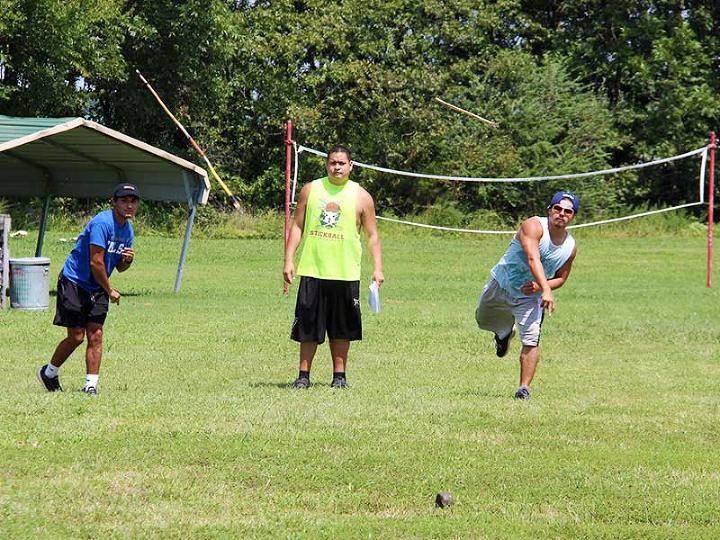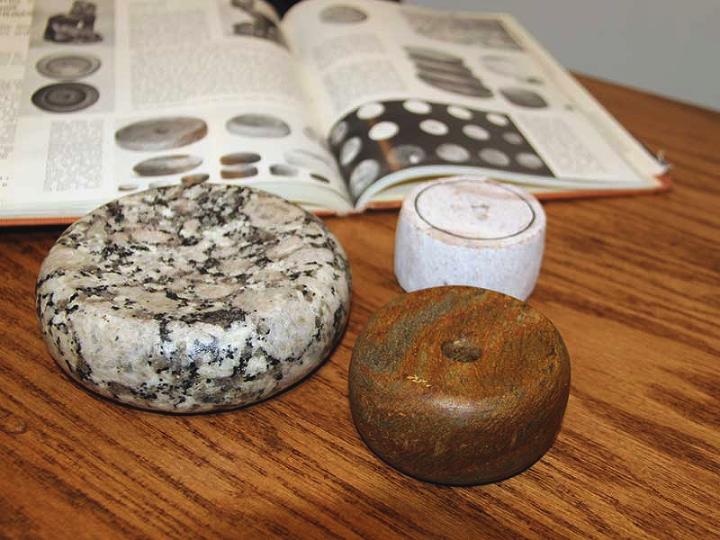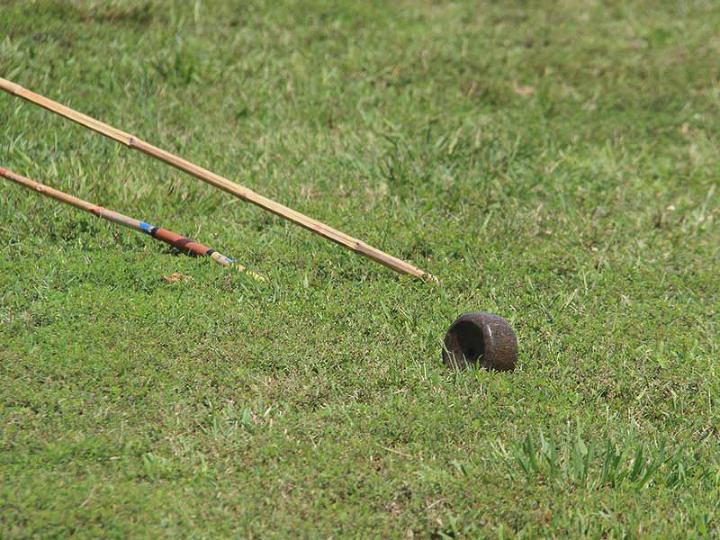 |
Canku Ota
|
 |
|
(Many Paths)
|
||
|
An Online Newsletter
Celebrating Native America
|
||
|
January 2021 - Volume
19 Number 1
|
||
|
|
||
|
Chunkey: A Game Of
Stones
|
||
|
by Lindsey Bark - Cherokee
Phoenix Reporter
|
||
|
credits: all photos by
Lindsey Bark - Cherokee Phoenix
|
The ancient game of chunkey has been revived in Cherokee communities in recent years as a means to show another aspect of tribal culture that is not well known. It was played as far back as 600 CE and was thought to have started in the Cahokia region. Southeastern tribes played chunkey for gambling. Those who played risked their livelihoods and sometimes their lives, said Cole Hogner, Cherokee Nation Native Games chunkey coordinator. "Traditionally, it was taken very serious," he said. "People would bet their house and everything they own on that game. From what I've read, they said losers were known to have committed suicide. After losing, I mean you lose everything. They didn't really have anything to live for because afterward it was very shameful to lose in that game." Hogner said chunkey was popular and though Cherokees played it, it did not belong to a specific tribe. "They believe it originated in the Cahokia region, which is now present-day St. Louis, Missouri. I read something recently that the game even traveled further down into Mexico. The tribal people down that way in the Mexican region they played a version of it." According to research, chunkey equipment contained an 8-to-10-foot spear, typically made from hickory or poplar, and a chunkey stone or disc made of clay, sandstone or granite. Stone sizes varied but were typically between 2 inches and 6 inches in diameter with concave or convex sides and about 2 inches thick. Some stones had holes in the middles of them for versions in which spears were thrown through the openings. United Keetoowah Band citizen Matt Girty has been studying and making chunkey stones since 2005. "I'm just taking it from an artist's standpoint. I don't know how they did it back in the day. I've been trying to get as close as I can get to what I've been reading." For today's chunkey, he makes stones from granite, steatite (a soapstone) and sandstone at a medium size and thicker so they roll better.
Though there are variations, historically, after the gambling occurred, a chunkey stone was rolled down a flat clay-packed court with a thin layer of sand. Spears were thrown or tossed, and whichever spear slid and stopped nearest the stone when it stopped rolling received a point, CN citizen and chunkey enthusiast Marcus Thompson said. "They would roll the stone and they would throw their spears and their spears would land and slide," he said. "They would play games up to 12 points. They use trinkets and whatever possessions they had to play the game and the loser would have to forfeit over his possessions." Thompson said people are still studying how chunkey was played because of its many variations. "We're trying to get the concept of how it's played. Back then when they played it, it was on a hard surface. It was almost cement-like. They packed the ground maybe 20 yards, 30 yards wide and maybe 70 yards long." Point systems, court styles, spear styles and chunkey stones all varied when played in ancient times. Each community or tribe had its own version. But chunkey players today play as close to its original form as possible with some alternatives. Today, chunkey is played on a flat grassy area. The stone is rolled and two players throw spears. Whoever's spear sticks in the ground or lands closest to the stone after it stops rolling receives a point. Games end when a player gets 11 points. Rather than gambling, Cherokees of all ages now play for friendly competition.
"The games can get lengthy, and it gets pretty competitive," Hogner said. "I know people that practice at home. They practice throwing their spears, and they make their own spears. It still holds a lot of value as what it was intended for originally. The origin of it was intended to bring everybody in the region (such as) Cahokians, farmers, immigrants, visitors, all together... Just like stickball, just like anything else, there's a lot of camaraderie and it's kind of a brotherhood so to speak."
About the Author |
||||||
|
|
|
|
||
|
|
||
| Canku Ota is a free Newsletter celebrating Native America, its traditions and accomplishments . We do not provide subscriber or visitor names to anyone. Some articles presented in Canku Ota may contain copyright material. We have received appropriate permissions for republishing any articles. Material appearing here is distributed without profit or monetary gain to those who have expressed an interest. This is in accordance with Title 17 U.S.C. Section 107. | ||
|
Canku Ota is a copyright ©
2000 - 2021 of Vicki Williams Barry and Paul Barry.
|
||
 |
 |
|
|
The "Canku
Ota - A Newsletter Celebrating Native America" web site and
its design is the
|
||
|
Copyright ©
1999 - 2021 of Paul C. Barry.
|
||
|
All Rights Reserved.
|
||


